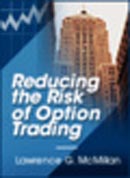.jpg)
Follow
Us:    
|
Stephen Bigalow’s
“Profit-Making Magic”
Many of you may recognize the name of Stephen W. Bigalow. He's considered by many of his peers to be the top Japanese candlesticks author, expert, trader and trainer in the world today.
Through his now more than three decades of intense study and analysis of candlestick patterns, he has discovered a set of entirely new candlestick trading techniques which make the basic methodology even more powerful!
Click for Instant Access to
"The Profit-Making Magic of Candlestick Patterns at Major Moving Averages"
In this FREE training video, Steve reveals strategies and techniques heretofore known to just a handful of traders in the world!
Steve's New Training Video Will Explain:
- Why Candlestick signals combined with moving averages result in a higher number of money-making trades.
- The 3 major moving averages that most, if not all, money managers use to make decisions about their portfolios.
- Why the moving averages are very important trend indicators and how they can be used to generate more profits.
- How using Candlestick signals along with the major moving averages can identify the ultimate buying and selling points.
If you'd like to learn more
about these "magical tools"
Click Here Now!

|
|
Lawrence G. McMillan is the editor of The Option Strategist Newsletter and the author of numerous articles on options and investment trading. Formerly senior vice president of the Equity Arbitrage Department at Thomson McKinnon Securities, he currently publishes newsletters and gives seminars on options, manages money for private clients and trades his own account.
 |
Lawrence McMillan Presents
Reducing the Risk of
Option Trading

Larry McMillan explains just how easy it is to trade options. In this fascinating video you will learn about the games people play with options. Larry also shares with you a short-term trading system and his philosophy on options. Larry is one of the best-selling traders and is an expert on options trading.
Bring Your Options Trading
to a New Level
Reducing the Risk of Option Trading
|
|

Better
Business Bureau
 |
|
Click on authors name
to learn more
|
| |
|
|
We feature Lawrence McMillan this week. He outlines some of the important rules used for success in option trading.
Then, Chuck Hughes brings us a video where he explains the benefits of his MVP Trendline Stock Strategy.
Next, the editors of TradeWins Publishing discuss Butterfly and Condor option strategies.
Last, Chris Verhaegh shares his PULSE Options Weekly Newsletter.
Enjoy!
Adrienne LaVigne
TradeWins Publishing
 |
|
Rules for Success in Option Trading
by
Lawrence McMillan
The following
is an excerpt from Lawrence McMillan's Reducing the Risk of Option Trading
Rule 1: Trade In Accordance With Your Comfort Level & Psychological Identity
If you are not comfortable selling naked options, don’t worry – even if though such strategies are nicely profitable for some traders, they should not be used if they cause you sleepless nights. If hedged positions drive you crazy because you know you'll have a losing side as well as a winning side, perhaps you should trade options more as a speculator, forming opinions and acting accordingly.
The important thing to realize is that it is much easier to make money if you are "in tune" with your strategies, whatever they might be. No one strategy is right for all traders, due to their individual risk and reward characteristics and accompanying psychological demands.
Rule 2: Always Use A Model
The biggest mistake option traders make is failing to check the fair value of the option before it is bought or sold. It may seem like a nuisance, especially if you or your broker don’t have real-time evaluation capabilities, but this is the basis of all strategic investments.
Rule 3: Don’t Always Use Options
The underlying instrument may be better, especially if options are overpriced or markets are too wide. This is related to the previous rule. Sometimes it's better to trade the underlying futures contract, rather than the options, especially if you're looking for a quick trade. Over a short time period, an overpriced option may significantly under-perform the movement of the underlying instrument.
Rule 4: Buying An In-The-Money Call Is Often Better Than Buying The Underlying Instrument; Buying An In-The-Money Put Is Frequently Better Than Shorting The Underlying Instrument
An in-the-money option has a high delta, meaning that it moves nearly point-for-point with the underlying futures contract.
Rules for Success
|
MVP Trendline Stock Strategy
by Chuck Hughes
This excerpt taken from Chuck Hughes' "Market Volatility Profits" DVD covers his trend line stock strategy. Specifically, Chuck covers how to determine trend direction, using fast and slow trend lines and how the trend line stock strategy acts as a safety switch.
Watch
Video
|
Butterfly and Condor
by TradeWins Publishing Editors
The Option Butterfly and Condor positions can be good strategies to use when the trader feels that the market may move near a specific target price or price range at option expiration. These trades can be used as directional positions, looking for the market to move higher or lower, but they can also be structured to take advantage of a market that is just expected to stay near the starting price.
The Option Butterfly and Condor are known as “wingspreads” in the language of options. They involve the combination of a vertical debit spread with a vertical credit spread, using all call options or all puts. For a long position, the trader is buying the outer strikes (the “wings”), and selling the middle strikes (the “body”). For these positions, there is no additional margin above the entry cost, since that is the maximum risk.
In the Butterfly position, three option strikes are used, with the middle options at the same strike, a trade that has its maximum profit potential at a single market price.
The Condor position uses four option strikes, with the middle options spread apart, creating a price range in which the trade can reach maximum profit potential. Some traders will use other names for Condors that have the middle strikes more than one strike apart, but the trade structure is the same.
NOTE: The Butterfly and Condor can also use both calls and puts, and in these cases are known as an “Iron Butterfly”, or “Iron Condor”.
Butterfly and Condor
|
PULSE Options Weekly Newsletter
by Chris Verhaegh
The following is an excerpt from Chris Verhaegh’s PULSE Options Weekly Newsletter
Every week Chris Verhaegh publishes his “PULSE Options Weekly Newsletter”. The following is from his most recent issue.
First Things First
The Economic Calendar for the next two weeks will have less events scheduled then they might otherwise. The reality is we’re heading into the Christmas Holiday followed by the New Year’s Day Holiday.
Because Christmas falls on a Sunday this year, the stock market is pushing back the observance of the holiday to Monday, December 26th. We get a three-day weekend. The same is true for the next week; New Year’s Day becomes a day off on Monday, January 2nd.
The Stock Exchanges have also tweaked their calendar a bit this year as compared to years past. Normally the market closes three hours early on Christmas Eve. But since Christmas Eve is on a Saturday, the market will be open a full six and half hours on the last trading day before the holiday weekend.
To Learn More Click Here
|
|